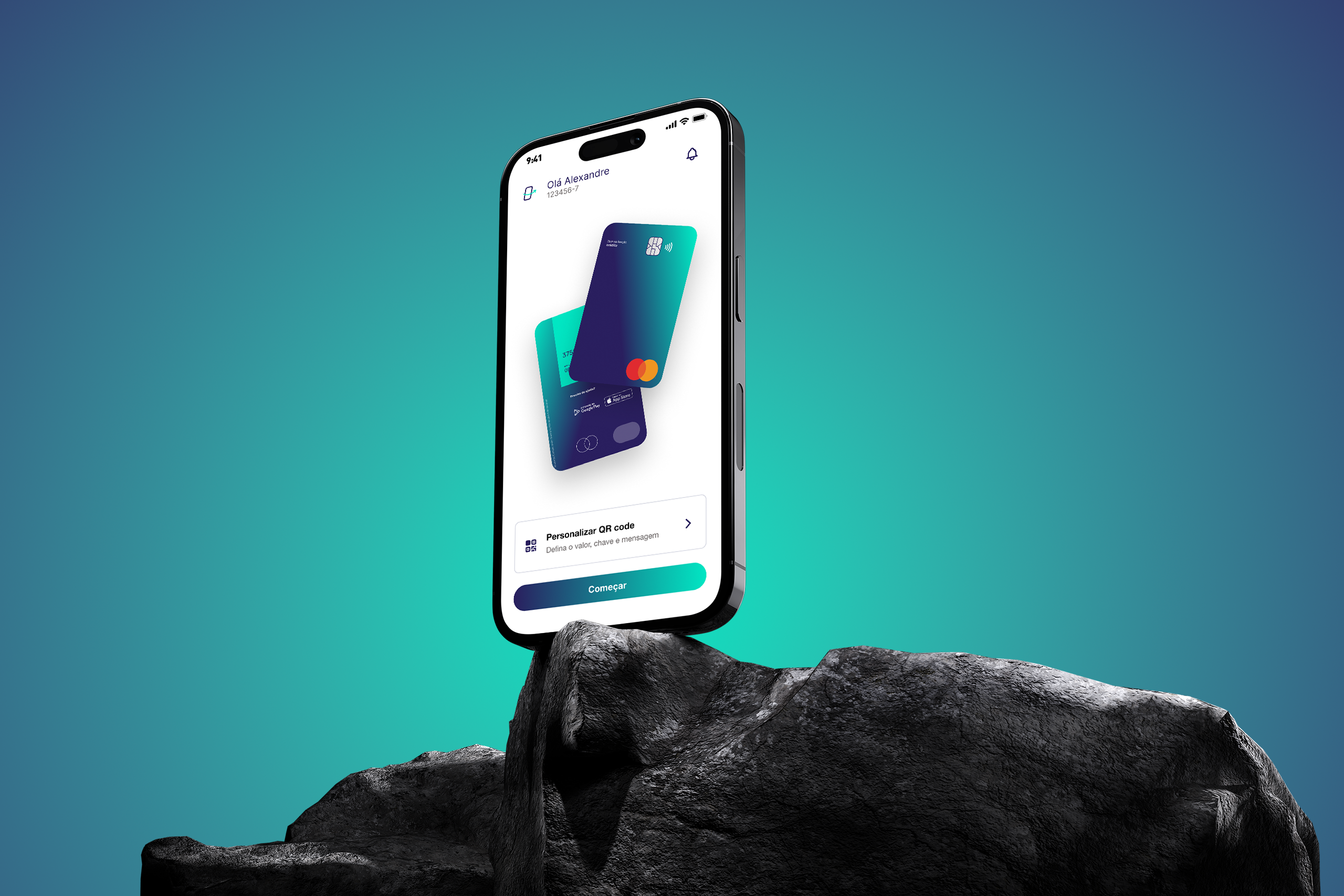
Pagme
© 2022
01.
Intro of case
Pagme is a Brazilian fintech based in Porto Alegre-RS, specializing in Banking as a Service (BaaS) solutions. Its white label platform enables companies from various sectors to operate as customized digital banks with a complete infrastructure — including Central Bank compliance, security, financial APIs, and a full digital account for individuals and businesses.
The solution targets companies aiming to enter the financial market without the high costs of technology, time, and regulation.
My role:
As a Senior Product Designer, I led the restructuring of the onboarding journey for Pagme’s mobile app, used by multiple white label solution clients. My focus was on reducing friction, increasing trust, and improving new user conversion rates.
02.
Work challenges
Despite the robustness of the solution, Pagme faced a critical bottleneck: the onboarding journey, designed with a WhatsApp chatbot-like visual and flow, caused confusion, delays, and a high abandonment rate. Additionally, the process lacked essential technologies like biometrics, secure authentication, and KYC validations — impacting both user experience and regulatory compliance.
Main Challenges:
03.
Research and Discovery
Methodology:
Key insights:
Main Insights:
Prioritization:
We used an Impact vs. Effort matrix to prioritize changes with high perceived value and feasible implementation effort.
04.
Problem Definition and Objectives
Identified Problem:
The onboarding journey was confusing, robotic, and instilled distrust, resulting in low conversion rates and high abandonment.
Strategic Objectives:
05.
Ideation and Proposed Solutions
Implemented Solutions:
Processes and Tools:
06.
Prototyping and Testing
Prototypes:
Tests Applied:
Test Results:
07.
Final Solution
Deliverables:
Key Features of the New Solution:
08.
Results and Impact
Post-Launch Metrics:
- Abandonment rate reduced from 35% to 12%.
- Average onboarding time: 12 min to 3 min.
- Account activation rate: 20% to 62%.
- Positive user feedback highlighting process clarity.
09.
Reflections and Learnings
Challenges Faced:
- Initial resistance from the dev team to replace the chatbot format.
- Difficulty balancing simplification with mandatory data validations.
- Time constraints for testing with more diverse audiences.
What I’d Do Differently:
- Include more users with low digital literacy in initial tests.
- Plan A/B tests with different flow versions in the first rollout phase.
Learning:
- Simplicity in onboarding is crucial for building trust and engagement.
- Interactive visuals and humanized language are decisive in fintechs.
- Modularity and flexibility enable efficient scaling across different white label clients.
10.
Visual Resources
- Initial sketches: Onboarding flow mapped in Miro.
- Medium-fidelity wireframes: Flows and screens in Figma.
- Interactive prototypes: Complete onboarding with micro-animations.
- Developer documentation: Technical files with rules and behaviors.